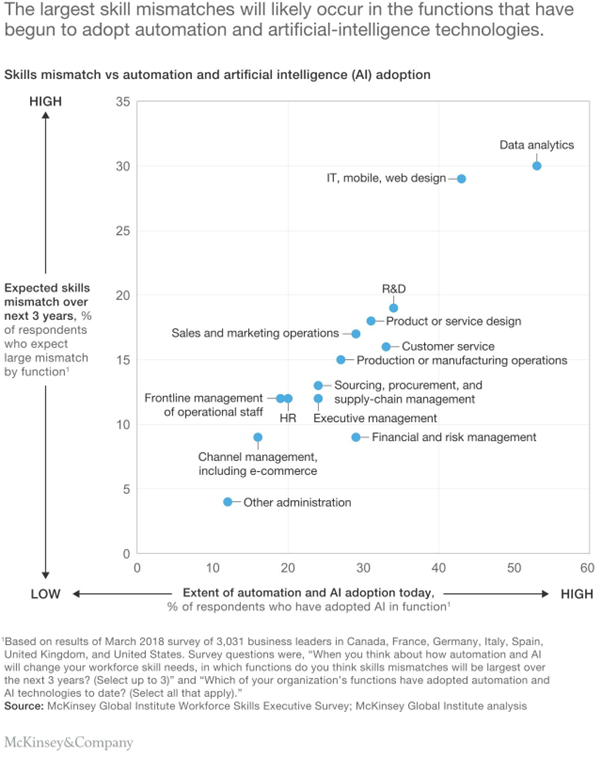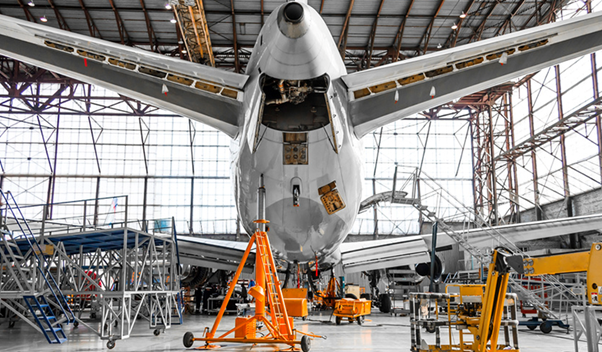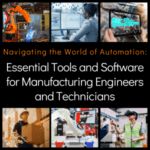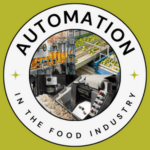Top 5 Automation Industry Hiring Trends in 2022
There’s little doubt that the fourth industrial revolution – or Industry 4.0 – is upon us. Industry analysts believe that automation is reshaping how businesses operate and economies function.
The effects of this revolution have created a vibrant and ever-changing automation industry focused on providing innovative solutions to help businesses improve their efficiency and streamline processes.
This makes the automation sector a popular destination for forward-thinking workers and seeks those with the skill sets to bring automation to life.
When it comes to hiring, five main trends have impacted the automation industry over the past few years. Following these trends will improve job seekers’ chances of getting a job, and they can help employers find the right talent as well.
In this article, I will share five of the most notable trends for automation hiring in 2022.
We are entering the ‘augmentation wave’ of automation
In 2018, PwC defined three unique stages of automation that will shape how industries change over the next 20 years. These are:
- Algorithm wave: We have seen this phase already – it refers to the use of algorithms to automate simple calculations and data handling. PwC argues that this wave of automation focuses primarily on data-heavy industries like finance, insurance, and tech.
- Augmentation wave: Repetitive, repeatable tasks – such as filling in forms, exchanging information, and analyzing data – will get automated through software. Automation will move from singular tasks to complex workflows.
- Autonomy wave: Robots and AI will become capable of physical labor and have the skills needed for manual jobs. Problem-solving will also become automatable.
We are now within the augmentation wave where most automation solutions streamline processes and assist humans.
With the popularization of Business Process Automation (BPA) tools in recent years, routine tasks get automated and replaced. For this reason, many of the jobs in the automation industry are still in software development.
Indeed, robotics engineering jobs are still available – with many pioneers in the field like Boston Dynamics and Toyota focusing on work that will drive the autonomy phase. Still, automation in its current form is mostly software driven.
Manufacturing is returning to the western world
The rise of globalization and the race to lower operating costs saw many Western countries’ manufacturing sectors collapse under the pressure of competition from East Asia.
However, the global supply chain catastrophes – such as the semiconductor shortage – suffered through the COVID-19 pandemic have prompted multinational corporations (MNCs) to rethink their offshore manufacturing plans.
The pandemic disrupted 98% of global supply chains. The resulting holes in the global economy have resulted in manufacturing reshoring efforts across industries.
Why can companies now begin to return their manufacturing hubs to the US & Europe? Automation reduces the need for low-wage labor and diminishes the cost benefits of foreign manufacturing.
Corporations are seeking stability and supply chain resiliency – especially considering the backdrop of increased tensions between the US & China.
What does this mean for automation jobs? The process of reshoring is slow, but the demand for automation engineering roles will increase throughout the 2020s.
These reshoring efforts may indeed kickstart the autonomy wave of automation earlier than expected – and MNCs will need skilled engineers to implement robotics, automation, and AI software into their manufacturing workflows.
Traditional sectors will experience a “skills mismatch”
The pace of automation and digital transformation is expected to outpace the skills shift of our current workforce – according to McKinsey.
The industries that have already begun to adopt automation are experiencing the most anxiety about a skills mismatch. Skills & retraining efforts are not keeping up with the introduction of augmentation automation.
It is important to note that many sectors will experience a skills mismatch as technological skills and computer science literacy will fail to keep up with the growing demand.
McKinsey expects that – by 2030 – the hours worked using technological skills will increase by 55%, whereas basic cognitive skills and admin jobs will fall by 15%.
To stay competitive in the labor market, job seekers must improve their technological skills – especially in using these automation technologies such as BPA, ERP, and CRM solutions.
Predictive maintenance will become essential in the logistics and manufacturing industries
In recent years, there has been a significant shift in how logistics and manufacturing firms approach maintenance operations.
The industry has departed from reactive maintenance, fixing things when they go wrong, to using AI and automation tools to monitor the health of machinery and assets.
Let us take the aerospace industry, for example. According to IATA, 17% of direct costs to airlines are maintenance, representing a significant factor in the profitability of aviation. So, by developing preventive maintenance systems, the aerospace industry has been able to improve safety and reduce the time airplanes must stay grounded.
Predictive maintenance empowers crews to analyze data quickly, detect issues, and take action to prevent failure. Pairing this capability with AI-accelerated simulations, engineers foresee faults and take appropriate action to keep aircraft running smoothly.
Machine learning is vital for predictive maintenance – since only AI can improve the accuracy in recognizing patterns of data that indicate faults.
Predictive maintenance capabilities have resulted in increased demand for skilled automation engineers able to install, maintain and operate the sensors that power these algorithmic systems.
Low-skilled labor risks replacement
A question asked in the face of increased automation is: “Will robots steal our jobs? PwC set out to answer this question in 2018 and found that for low-skilled, non-technical jobs, the answer may be yes.
PwC found in the augmentation wave that 20% of existing low-education jobs are potentially at risk. PwC’s assessment is a global look at job growth, so many jobs at this stage may stay around for now as companies pursue manufacturing reshoring.
However, the autonomous wave of automation represents the highest risk to labor. Companies may automate about 45% of these jobs in the future. PwC expects sectors such as transport and financial services to be the hardest hit.
What does that mean for job seekers? High-skilled jobs protect employees from automation – with PwC forecasting no more than 10% of global high-skilled jobs being at risk.
Future Insights: What to expect from automation jobs
Here is what to expect from the automation job market in 2022 and the future:
- Increased competition: As automation replaces other jobs, more people will retrain and join the automation sector – job competition will increase.
- Technical, AI, and computer science skills will be in high demand: Physical and basic cognitive skills will fall out of favor. In its place, companies will seek high skilled, technical employees.
- Automation engineering and robotics markets will grow: As the autonomous wave of automation commences and reaches maturity in the 2030s, robotics and automation engineering will become lucrative career paths.
Businesses will continue to strive for efficiency gains – whereas reshoring will further increase the demand for industrial autonomation. Fortune Business Insights forecast that the automation market will reach $395bn by 2029.
The future is bright for the automation sector – and those who gain the necessary technical and engineering skills to power the next wave of automation will benefit from the industry shifts to come.
About the Author:
This article was created by Bryan Hellman, a writer with Industrial Automation Co., who enjoys writing about Robotics, Automation, and future opportunities with AI.
Catch him on LinkedIn.








